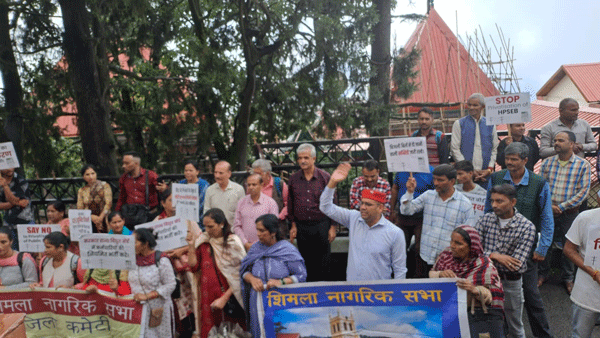Rajan Kumar Sharma, Aug 27,
Over recent decades, India has experienced a significant rise in the frequency and impact of natural disasters. Comparing the data from the 1950s to more recent years, the number of disasters has surged dramatically. This number rose to 162 during the decade from 2001 to 2010, and further escalated to 245 in the 2010-2020 period. This trend highlights a serious growth cycle in disaster occurrences.
From 1900 to 2011, various types of disasters in India have seen an alarming increase. The percentage increases are as follows: floods by 40%, landslides by 6%, avalanches by 1%, severe storms by 26%, droughts by 2%, earthquakes by 5%, epidemics by 12%, and extreme temperatures by 8%.
In terms of geographical context, India is the seventh largest country in the world by area, covering 3,287,263 square kilometers. However, it has recently surpassed China to become the most populous country, with a population exceeding 1.4 billion. This population boom poses significant challenges for disaster management, as the larger population intensifies the difficulties associated with managing and mitigating disasters.
Approximately 82% of India’s land area is classified as highly sensitive to various acute disasters, which increases the risk of loss of life and property. The central and state governments often lack sufficient resources to effectively manage these risks and ensure adequate safety measures for such a vast and dense population.
One of the most concerning natural disasters in India is earthquakes. Earthquakes occur when the Earth’s crust experiences sudden vibrations due to friction between tectonic plates or other geological factors. The “Ring of Fire,” a region around the Pacific Ocean, is known for frequent earthquakes and volcanic activity due to its tectonic plate boundaries. Earthquakes are categorized into zones based on their intensity and potential impact: Zones 2, 3, 4, and 5. Zones 4 and 5 are considered highly sensitive, with potential earthquakes of up to 9 magnitude on the Richter scale, capable of causing severe damage.
In India, several states and regions fall into these high-risk zones. Particularly, Jammu and Kashmir, Himachal Pradesh, Uttarakhand, Bihar, Sikkim, the northeastern states, and parts of Gujarat are categorized under earthquake Zone 5. Himachal Pradesh, in particular, is highly vulnerable, with 553 earthquakes recorded between 1800 and 2008. The most devastating was the Kangra earthquake on April 4, 1905, which had a magnitude of 8.9. This earthquake resulted in approximately 20,000 deaths, 53,000 domestic animal fatalities, and the destruction of 100,000 houses, with an estimated economic loss of 2.9 million in Kangra district alone.
Specific districts in Himachal Pradesh are categorized as highly sensitive to earthquakes. These include Kangra 98.80%, Mandi 97.40%, Hamirpur 90.90%, Chamba 53.20%, Kullu 53.10%, Una 53.10% and Bilaspur 25.30%.
The possibility of severe earthquakes in these areas remains high, with potential magnitudes ranging from 8 to 9. Historically, India has experienced several destructive earthquakes, such as the 7.5 magnitude earthquake in Bhuj, Gujarat in 2000, which killed about 20,000 people; the 8.6 magnitude earthquake in Assam in 1950, which resulted in approximately 100,000 deaths; and the 6.4 magnitude earthquake in Maharashtra in 1993, which also claimed about 20,000 lives.
Himachal Pradesh, located in north-western India, has not seen a major destructive earthquake since the 1905 Kangra earthquake. Nevertheless, the possibility of a significant earthquake remains, and preparedness is crucial. It is essential to be aware of earthquake safety measures and ensure that infrastructure such as schools, hospitals, government buildings, and residential areas are built to withstand seismic activity. Following guidelines such as the National Building Policy-2016 and conducting regular earthquake drills are vital steps in mitigating potential damage.
A proactive approach to disaster management includes having a well-prepared disaster management plan and continuously updating it based on current data and forecasts. Community awareness and education, particularly through youth engagement, are also key to enhancing disaster resilience.
Noteworthy is that it is evident that vulnerability is high but as India’s population continues to grow rapidly, addressing the challenges of disaster management becomes increasingly critical. By focusing on preparedness, infrastructure resilience, and community awareness, India can better manage the risks associated with natural disasters and work towards becoming a more resilient and developed nation.
(Writer is a disaster management expert posted with the district administration in Sirmour district of Himachal Pradesh)
Empower Independent Journalism – Join Us Today!
Dear Reader,
We’re committed to unbiased, in-depth journalism that uncovers truth and gives voice to the unheard. To sustain our mission, we need your help. Your contribution, no matter the size, fuels our research, reporting, and impact.
Stand with us in preserving independent journalism’s integrity and transparency. Support free press, diverse perspectives, and informed democracy.
Click [here] to join and be part of this vital endeavour.
Thank you for valuing independent journalism.
Warmly,
Vishal Sarin, Editor





